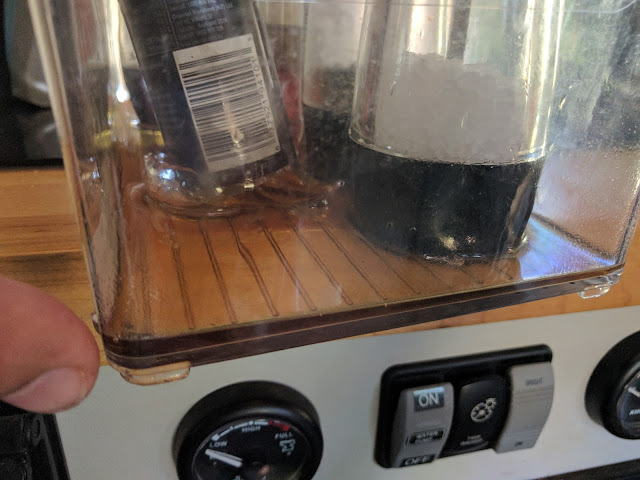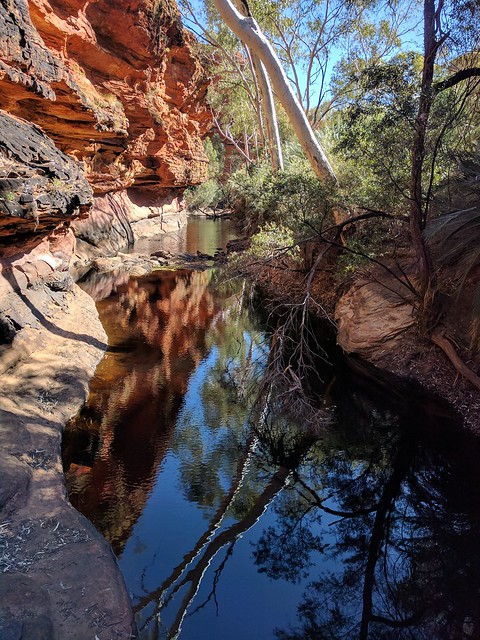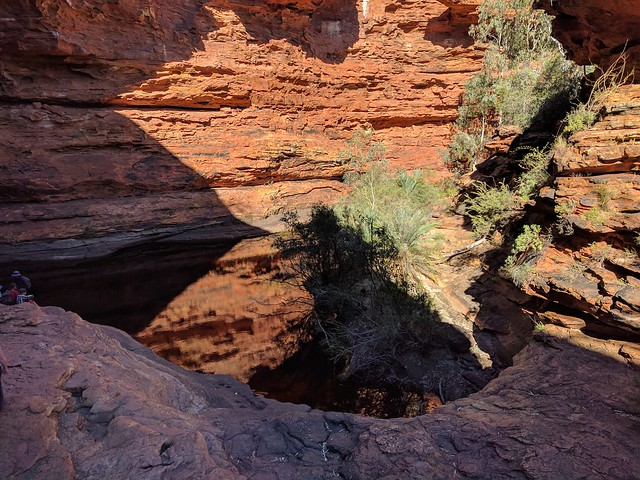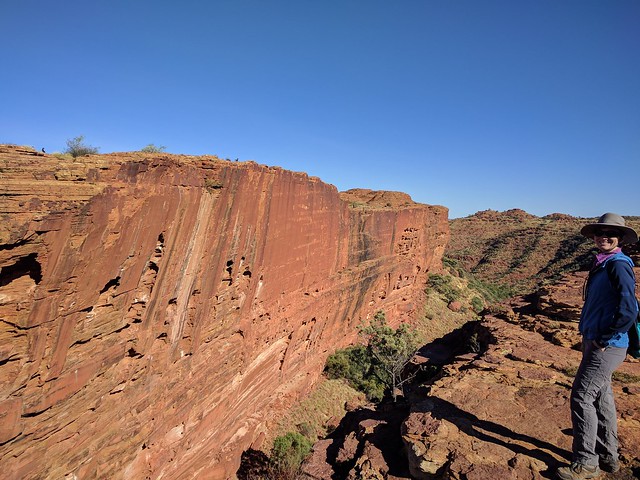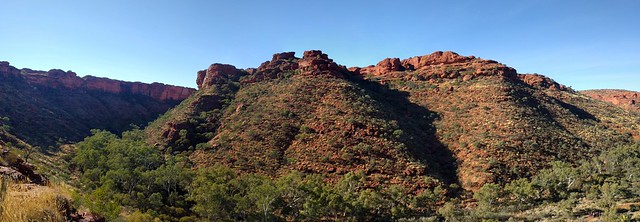Uluru-Kata Tjuta National Park
By Jen.
When an American thinks of Australia and what there is to see there, they most commonly think of Ayers Rock, which is more correctly named Uluru. We had finally arrived to see it after nearly 6 months (1 week short) of being here. It was about what we expected: a big rock and a tourist trap. To be fair, it is much more than that, but not nearly all it is hyped up to be.
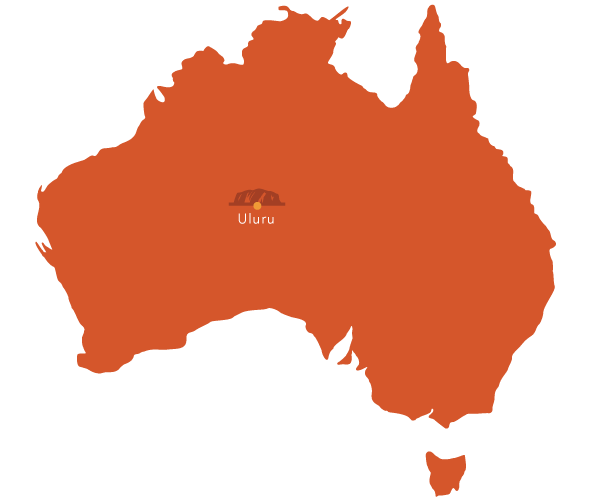
As we approached the rock from the north (at around 11am on Saturday during the school holidays), we suddenly came up on a long line of cars stuck in a traffic jam. They were of course stopped in our direction. Jonathan wanted to just pull off and get some lunch and let the line disperse, but I knew better. It would only get worse, and it did. Turns out that this congestion was caused by the fact that the park only had 2 lanes to enter it by, one of which was for people who had already obtained their passes. Unlike Kakadu, you can’t purchase your tickets ahead of time, so you are stuck going down the one lane to get a ticket. They only have 1 person working there at a time, so you can’t make the line move any quicker. Very terrible setup for one of Australia’s most popular parks. For those who are curious, the park tickets cost $25 per person for 3 days, or $32.50 for an annual pass.
My plan was to simply do the long walks at each destination (Uluru and Kata Tjuta), which I figured would get us away from the crowds. However, since it was after noon and each walk would take 3+ hours, I figured we would pick off the few short walks that weren’t covered by the larger ones, which was the Walpa Gorge at Kata Tjuta. We also checked out the view from Kata Tjuta’s dunes.
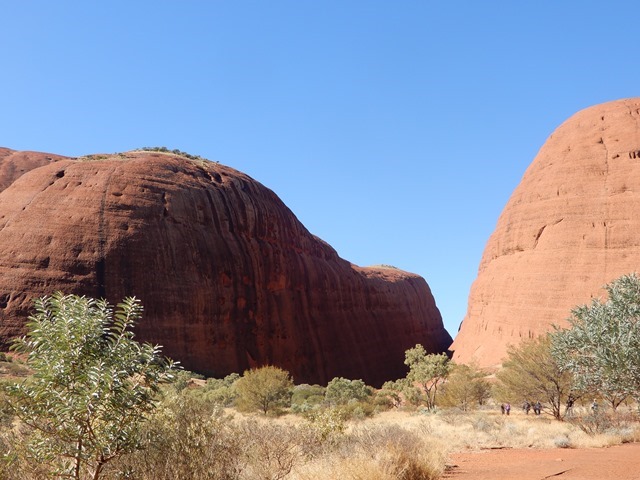

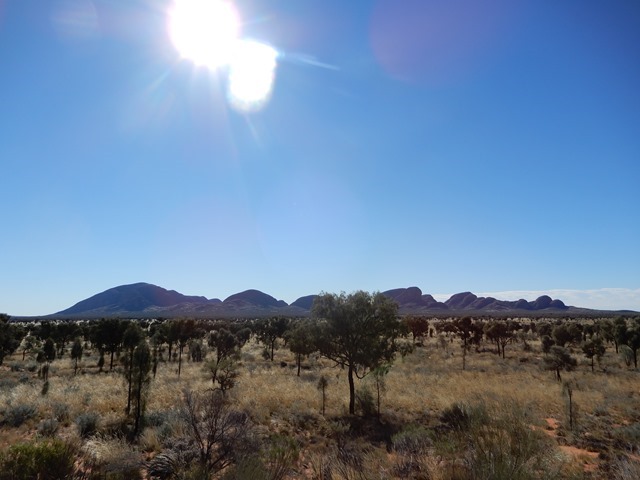
Next day, we decided to do sunrise at Uluru. This and sunset are supposed to be epic. While interesting, sunrise, while less crowded, was definitely not as gorgeous as I was hoping. The main reason for this is that the main lookout is positioned south of the rock. Since we are south of the equator, the sun is always on the north side of the rock, especially at this time of year. So, we only saw a few small rays hit hit the rock, not the entire rock suffused in sunrise glory. I guess this is why sunset is more popular (lookouts are positioned on the north side of the rock), beside the fact that not many people want to get up and going before 730am in the morning, especially since you can’t camp in the park.
 Uluru at sunrise.
Uluru at sunrise.
 Uluru in forefront, Kata Tjuta in background.
Uluru in forefront, Kata Tjuta in background.
 Kata Tjuta at sunrise.
Kata Tjuta at sunrise.
Since we were already near Uluru, we decided to go ahead and do that 10.6 km walk around the base. This is a bit deceptive, as you only get to go near the rock on half of the circumference. The other half you are far away, but not far away enough to capture the entire rock in your photo (without panorama mode). It was a good walk though, and less busy, especially since we started early. There were quite a few people though who took advantage of the fact that you could cycle around it, which may be a better alternative to what we did. Interestingly, there were many sections of the rock that were considered “sacred” or culturally sensitive, and they didn’t want you taking pictures of that section. What I found fun about the walk was the little garden sections nestled in inside corners of the rock. You would walk from the desert plains and into a little oasis with trees and waterholes, which were made possible by the water that flows off the rock after the rains. Even while driving or walking around the rock, you don’t immediately notice these sections, so they are a bit like secret gardens.




